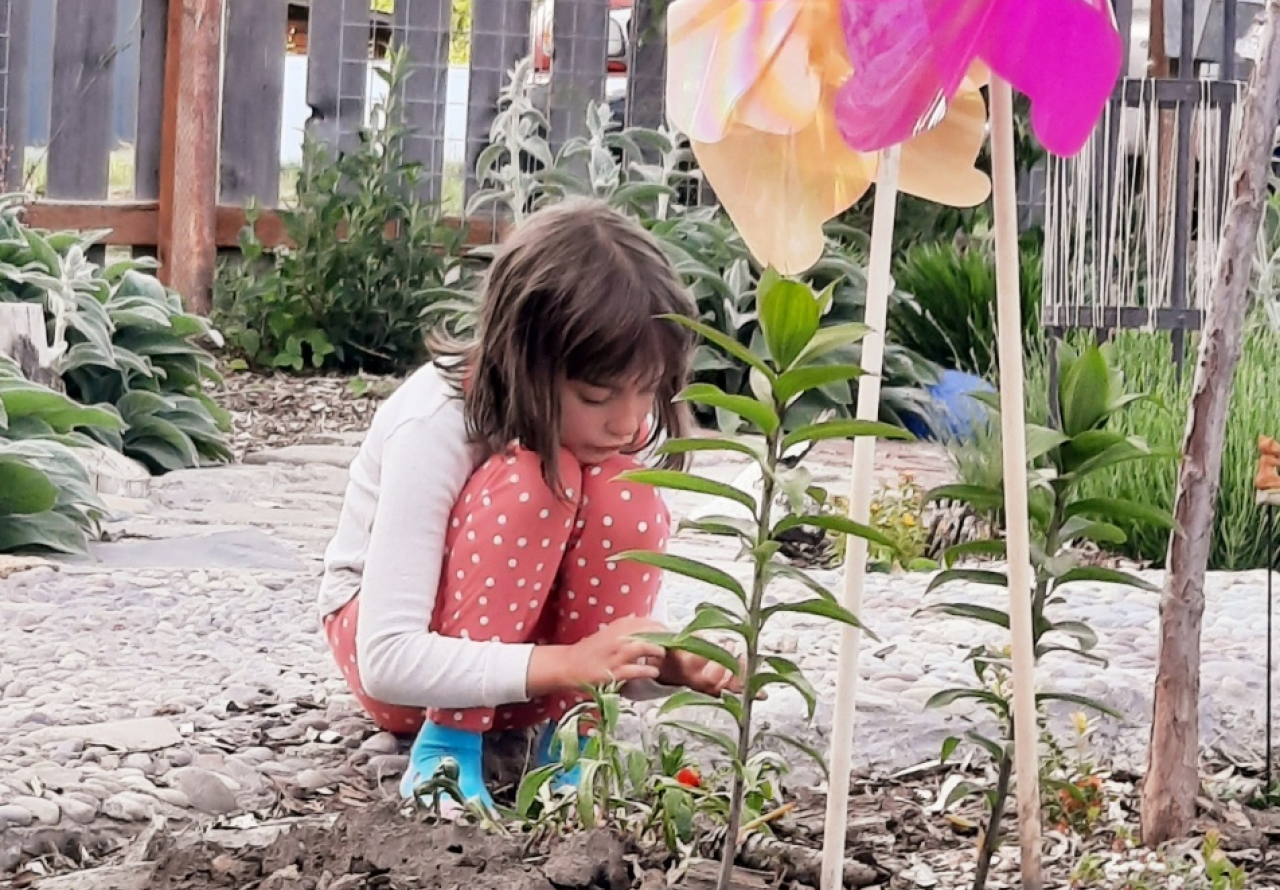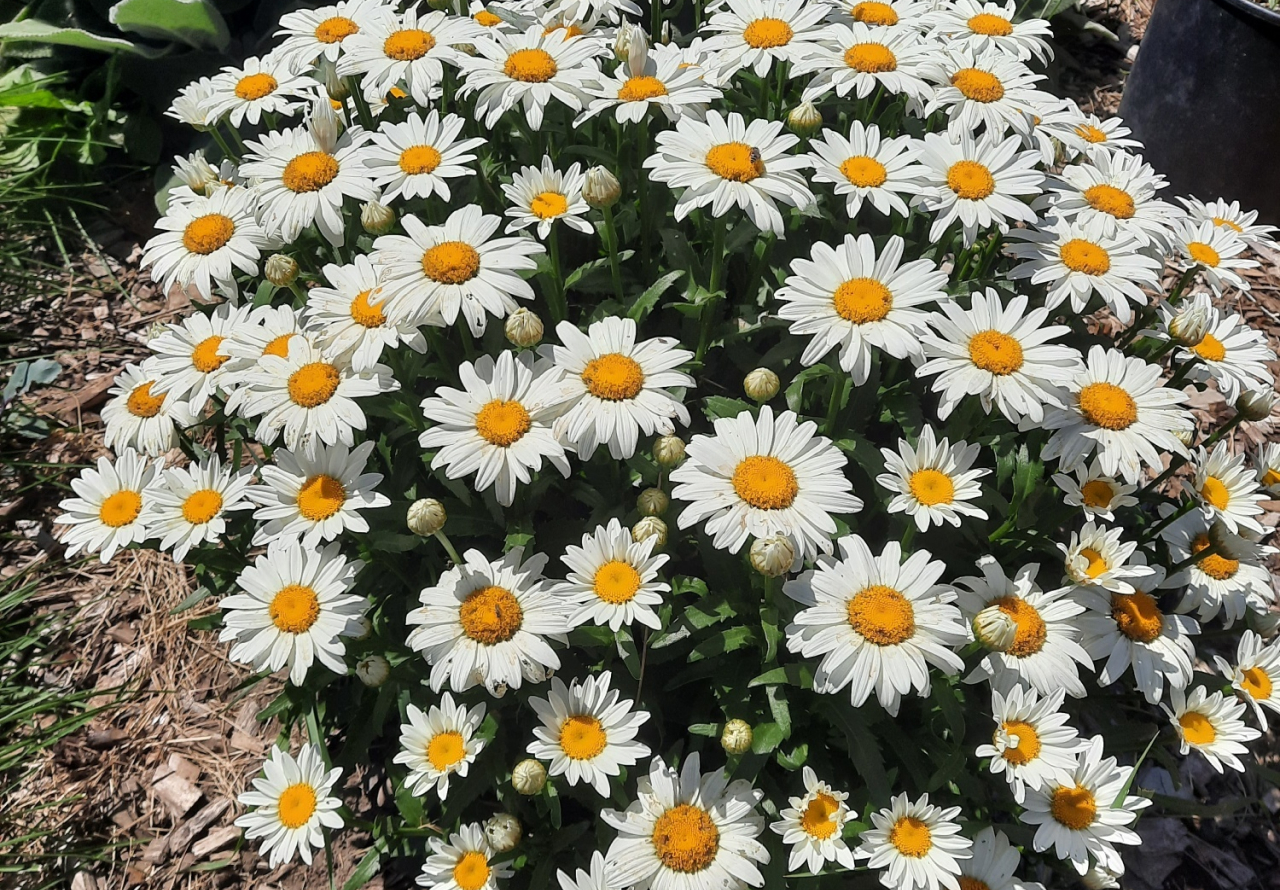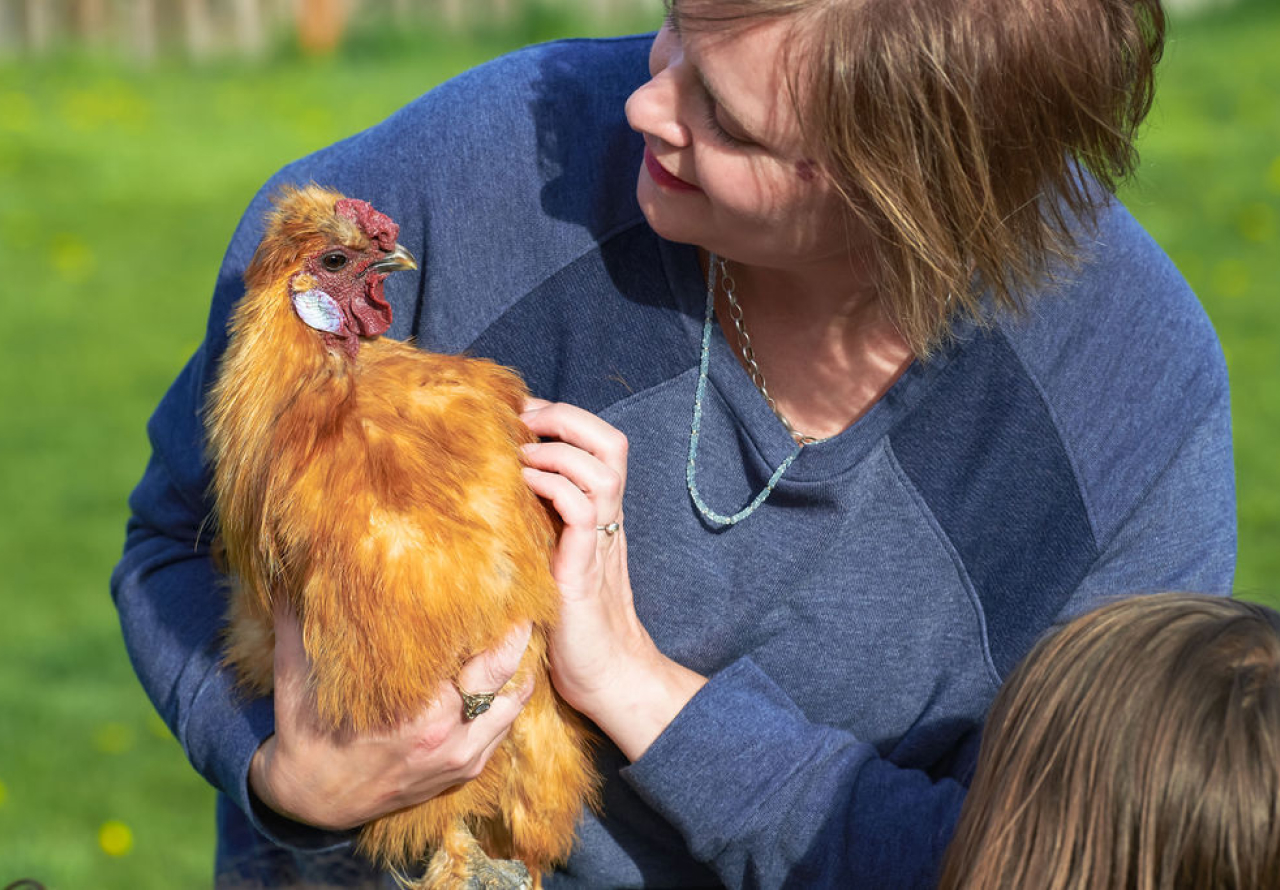
All the ways kids love to move their bodies is informed by a sensory system that doesn’t get as much attention as the classic 5 senses.
Welcome to the VESTIBULAR SYSTEM! This is one of two movement-based sensory systems and equally important to our children’s holistic development and well-being as any of the other sensory systems.
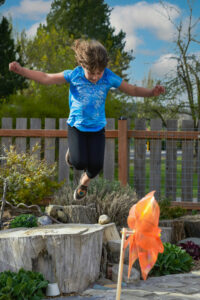
Photo credit: Hara Allison Photography
Our vestibular system is located in our inner ear. Through its complex workings, it detects where our head is relative to gravity and sends that information to our brain for processing. Are we right side up? Are we upside down? Are we sideways? Our vestibular system lets us know.
Have you ever had vertigo? You feel like the room is spinning around you. You feel off-balance. You’re dizzy. Vertigo is a sign of a very grumpy vestibular system.
Movement-based activities, especially those that require us to be something other than straight up and down, mold our vestibular system. The more kids move, the more they build their vestibular system.
There are lots of activities you can encourage your kids to do at home to stimulate their vestibular system. Some fun ideas include:
DANCING. This is an incredibly fun multi-sensory system experience for you and your kids! Dance party!
SWINGING. I love nest swings for this. These can be installed easily at home, indoors or outdoors.
BALANCING. Take a hose and arrange it in a squiggle in the lawn (or wherever works). Make a game out of who can balance the longest. Get creative and make it more and more challenging.
JUMPING. We installed a series of log segments in our sensory garden. My kids love to use these for all sorts of movement, jumping included.
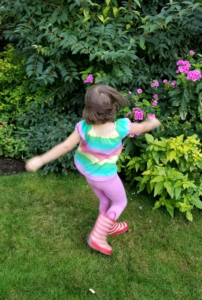
Spinning gives great vestibular input!
If your kiddo is SENSITIVE TO MOVEMENT, it’s important to let them be in charge of how much stimulation they get. Maybe they want to sit in a next swing and gently sway. Perhaps they’re only comfortable with gentle rocking. When they control their sensory experience, they feel safer and more in control of their bodies and their experiences.
How does your kiddo’s play area encourage movement?
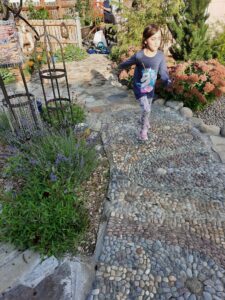
Sensory paths encourage kids to move their bodies in different ways and feed their vestibular system.
Ok, it’s a bit of a stretch to identify sensory plants for movement, but…challenge accepted!
The first thing that comes to mind is a favorite of young adventurers: climbing trees.
When I was a little girl, we had an incredible Norway maple in our backyard. Whenever I would climb up into its branches I felt like I was in another world. I felt safe. I felt connected. And, I always felt exhilarated figuring out how the heck to get back down which was always a combination of balancing, dangling, swinging, and a well-timed jump.
In my home now, my kids love an old cherry tree that was damaged years ago in a storm. When they were younger, they used to hang and swing from its branches. As they got a bit older, they’d love to climb the trunk to get up and sit on the lower branches.
This summer, my husband built a small fort in the storm-damaged opening in the canopy. Now, the girls can enjoy playing in the heart of their cherry tree. There’s nothing like a view from inside a tree canopy!
Another way plants can inspire movement is planting them in clusters for a maze-like effect. If you have some space, ornamental grasses, like Karl Foerster Feather Grass (Calamagrostis acutiflora ‘Karl Foerster’), are wonderful for this because they make swishing sounds as kids pass by.
Another idea is using log segments as climbing/balance features.
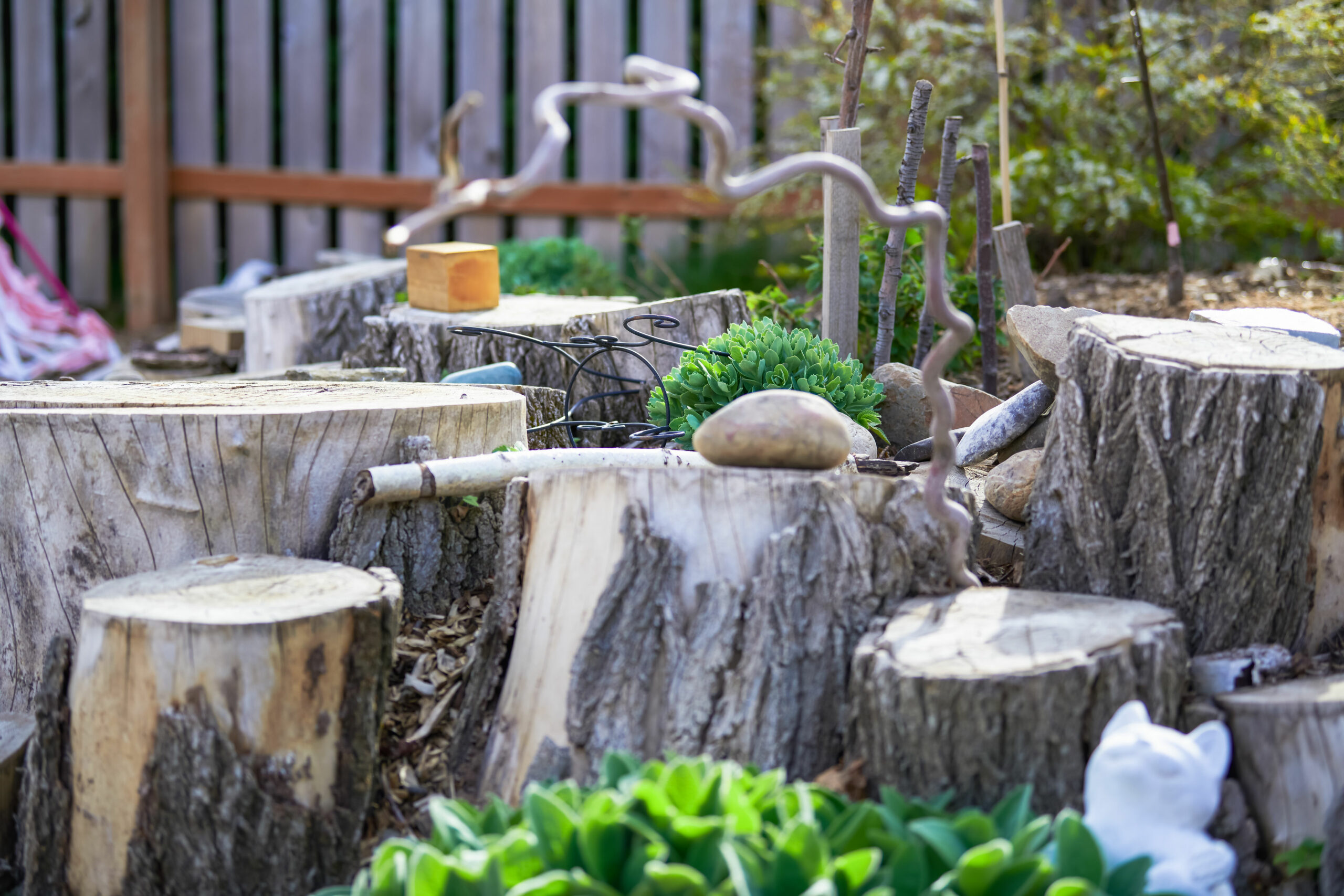
Photo credit: Hara Allison Photography
I have a big log round that was sawed in half. We turned it flat side up for a fun rocker.
Thinly sliced log segments, or log cookies, can be placed like stepping stones for hopping.
If you don’t have easy access to these sorts of natural materials, check out Facebook Marketplace, Craigslist, or other online platform. People are always giving these things away for free.
Don’t underestimate the natural connection that forms between your child and nature in this co-creative play experience. It’s such a beautiful thing!
Check out my eBook, Nature Play for the 7 Senses: A Parent’s Guide for Natural PLay & Learning Spaces for ALL Children
